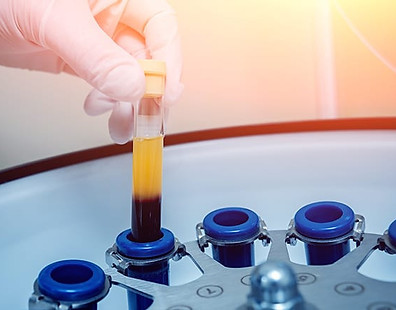
Platelet Rich Plasma Injections
What is Platelet Rich Plasma (PRP)?
Platelet rich plasma (PRP) is plasma with an increased concentration of platelets. Plasma, the liquid part of blood, carries platelets and other blood cells within it. Platelets are blood cells (cell fragments) that aid in clotting and healing. PRP also contains other molecules which aid in the process of healing, such as progenitor cells, which are close to stem cells in function. These cells still have some potential to differentiate into multiple types of cells and therefore, can potentiate healing.

How is PRP obtained?
To create platelet rich plasma, a patient’s blood is obtained in the office and then run through a centrifuge to concentrate and separate the plasma (which contains platelets) from the heavier cells (red and white cells). This plasma can then be injected back into the body, and is typically placed in the injured anatomical location with the intention to initiate or aid in the healing process. Ultrasound can be used to guide the injection in order to increase precision.
Risks and Benefits of PRP
There has been a lot of curiosity and media buzz around PRP, as professional athletes have used it. It seems to be effective in treating tendon problems and shows promise in knee osteoarthritis. There is less support for treating fractures or osteoarthritis in some other joints such as the glenohumeral joint.
Fortunately, PRP is a very low-risk treatment, because it is unlikely for the body to have a bad reaction to its own plasma. Some studies have shown it to be promising, and larger randomized control trials have been called for. More scientific evidence will certainly help us to understand when and how to use this powerful tool.
We generally think this is a good place to start for people who are considering stem cell treatment, as the progenitor cells in PRP can have many of the same properties as stem cells, but without the same cost or risks associated with harvesting or placing stem cells.